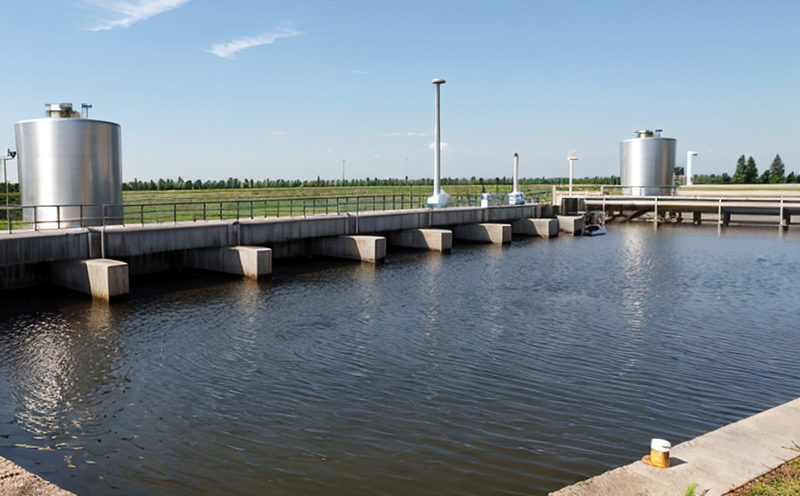WHO Guidelines Wastewater Pathogen Compliance Testing
The World Health Organization (WHO) guidelines play a crucial role in ensuring public health and environmental safety. Compliance with these guidelines is essential to prevent the spread of waterborne pathogens, which can lead to significant public health risks. This service ensures that wastewater treatment facilities adhere strictly to WHO standards for pathogen compliance testing.
The testing process involves several critical steps, including sample collection from different points within the wastewater treatment system, specimen preparation in a controlled laboratory environment, and analysis using internationally recognized methods. The goal is to ensure that the treated effluent meets stringent microbial quality criteria set by the WHO.
Our team of experts uses advanced microbiological testing techniques to detect the presence of pathogens such as bacteria, viruses, and protozoa. This service helps facilities stay compliant with international standards, thereby protecting public health and the environment. Compliance testing is mandatory in many countries and regions, especially for large-scale industrial plants and municipal wastewater treatment facilities.
The importance of this test cannot be overstated, particularly given the increasing global focus on sustainable development goals (SDGs). By ensuring compliance with WHO guidelines, we contribute to achieving SDG 6: Clean Water and Sanitation. This service also supports other related SDGs by promoting environmental sustainability and public health.
Our testing process is designed to be rigorous and precise, employing cutting-edge technology and experienced personnel. We utilize methods such as quantitative PCR (qPCR) for bacteria and viruses, and direct plating techniques for culturable microorganisms like Escherichia coli (E. coli). These methods provide accurate quantification of pathogens in wastewater samples.
Compliance with WHO guidelines is not just about meeting regulatory requirements but also about demonstrating a commitment to public health and environmental stewardship. This service helps facilities meet these commitments by providing reliable, traceable data that can be used for regulatory compliance and internal quality assurance.
The results of our testing are highly detailed and provide insights into the microbial load in wastewater. This information is invaluable for optimizing treatment processes and ensuring long-term compliance with WHO standards. Regular monitoring using this service ensures ongoing adherence to these guidelines, helping facilities avoid costly penalties and reputational damage.
Scope and Methodology
| Step | Description |
|---|---|
| Sampling Location | Collection points include influent, primary clarifiers, secondary clarifiers, effluent discharge, and final treatment. |
| Sample Volume | At least 1 liter per sampling point for comprehensive analysis. |
| Storage Conditions | Stored at 4°C upon collection to prevent microbial growth. |
| Pathogen Type | Testing Methodology | Acceptance Criteria (WHO Guidelines) |
|---|---|---|
| Viruses | Quantitative PCR (qPCR) and plaque assays. | No detectable viruses in the final effluent discharge. |
| Bacteria | Culture-based methods including direct plating on selective media. | E. coli |
| Protozoa | Flocculation and microscopic examination. | No detectable Giardia or Cryptosporidium cysts in final effluent discharge. |
Why Choose This Test
The WHO Guidelines Wastewater Pathogen Compliance Testing is a vital service for facilities that need to ensure their wastewater treatment processes meet the highest standards of safety and efficacy. By choosing this test, you can:
- Ensure regulatory compliance with international guidelines.
- Promote public health by preventing the spread of waterborne pathogens.
- Support environmental sustainability through continuous monitoring and optimization of treatment processes.
- Enhance your facility's reputation for quality and reliability.
- Avoid costly fines and legal penalties associated with non-compliance.
- Gain access to detailed, actionable data that can be used for process improvement.
This service is particularly beneficial for large industrial plants, municipal wastewater treatment facilities, and any organization involved in the management of water resources. By investing in this testing, you are making a significant contribution to public health and environmental protection.
Environmental and Sustainability Contributions
The implementation of WHO Guidelines Wastewater Pathogen Compliance Testing contributes significantly to several aspects of environmental sustainability:
- Public Health Protection: By ensuring that treated wastewater meets stringent microbial quality standards, this service helps protect public health from the risks associated with waterborne pathogens.
- Water Resource Management: Properly treated effluent can be reused for irrigation or other non-potable purposes, reducing the demand on fresh water resources.
- Emission Reduction: Compliance testing helps facilities identify and address inefficiencies in their treatment processes, leading to reduced emissions and lower energy consumption.
- Biodiversity Conservation: By minimizing the release of harmful pathogens into aquatic environments, this service supports biodiversity conservation efforts.
Incorporating this service into your facility's routine is a proactive step towards achieving sustainable development goals. It demonstrates a commitment to responsible environmental stewardship and public health.





